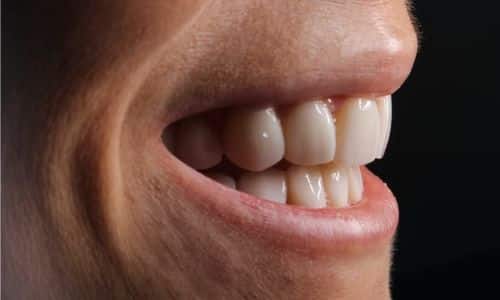When it comes to transforming your smile, veneers offer an excellent solution. Veneers are thin shells bonded to the front surface of your teeth, improving their appearance and giving you a flawless smile. Two common types of veneers are porcelain veneers and composite veneers. This article will explore the differences between porcelain vs. composite veneers and determine your best option.
What are Porcelain Veneers?
Porcelain veneers are thin, custom-made shells created from high-quality dental porcelain. These veneers are fabricated in a dental laboratory and bonded to the teeth using a strong adhesive. Porcelain veneers are known for their durability and natural-looking appearance.
Advantages of Porcelain Veneers
Porcelain veneers offer several advantages, making them famous for smile makeovers. Here are some of the key benefits:
- Natural appearance: Porcelain veneers closely resemble natural teeth thanks to their translucent quality and ability to reflect light.
- Stain resistance: Porcelain is highly resistant to stains from coffee, tea, wine, and other common stain-causing substances, keeping your smile bright and beautiful.
- Longevity: With proper care, porcelain veneers can last 10 to 15 years or even longer, providing a long-lasting solution for your smile enhancement.
Disadvantages of Porcelain Veneers
While porcelain veneers have numerous advantages, they also have a few drawbacks to consider:
- Cost: Porcelain veneers are more expensive than composite veneers, mainly due to the materials used and the specialized laboratory fabrication process.
- Irreversibility: Applying porcelain veneers involves removing a thin enamel layer from the teeth. Once this is done, the procedure is irreversible, as the teeth will always require a surface or dental restoration to maintain their appearance.
What are Composite Veneers?
Composite veneers, or composite bonding, are made from a tooth-colored resin material directly applied and sculpted onto the teeth. Unlike porcelain veneers, the dentist creates composite veneers chairside, making them a quicker and more cost-effective option.
Advantages of Composite Veneers
Composite veneers offer advantages that may make them suitable for specific individuals. Here are some of the benefits:
- Affordability: Composite veneers are generally more affordable than porcelain veneers, making them a budget-friendly option for smile makeovers.
- Versatility: Since composite veneers are applied directly to the teeth, they offer greater flexibility in shaping and color matching, allowing for more customized results.
- Reversibility: Unlike porcelain veneers, composite veneers are reversible, as they can be removed and replaced without significant modifications to the underlying teeth.
Disadvantages of Composite Veneers
While composite veneers have their advantages, there are a few downsides to consider as well:
- Durability: Composite veneers are generally less durable than porcelain veneers and may require more frequent repairs or replacements.
- Stain susceptibility: Composite veneers are more prone to staining than porcelain veneers. However, regular dental hygiene practices and avoiding excessive consumption of staining substances can help mitigate this issue.
8 types Of Veneers Explained: All The Materials, Pros, Cons, Durabilities
Porcelain vs. Composite Veneers: A Comparison
To determine which type of veneer is best for you, let’s compare porcelain and composite veneers across various aspects:
Durability
Porcelain veneers are highly durable and can withstand normal biting and chewing forces. They are resistant to chipping and cracking, making them a durable option. On the other hand, composite veneers are more susceptible to wear and tear, and they may need repairs or replacements more frequently.
Aesthetics
Both porcelain and composite veneers can significantly enhance the appearance of your smile, but porcelain veneers have an edge when it comes to aesthetics. Their ability to mimic real teeth’ natural translucency and light-reflecting properties results in a more realistic and lifelike smile.
Cost
In terms of cost, composite veneers are generally more affordable compared to porcelain veneers. If budget is a significant consideration for you, composite veneers can provide a cost-effective solution for smile enhancement.
Application Process
The application process for porcelain and composite veneers differs significantly. Porcelain veneers require multiple dental visits, as they are fabricated in a dental laboratory. Composite veneers, on the other hand, can be applied directly to the teeth in a single visit.
Maintenance and Longevity
Porcelain veneers are relatively low-maintenance, requiring regular oral hygiene practices such as brushing, flossing, and regular dental check-ups. With proper care, they can last for over a decade. Composite veneers may require more frequent repairs or replacements due to their susceptibility to wear and staining.
Repairability
In the event of damage or wear, porcelain veneers are more challenging to repair, often requiring the replacement of the entire surface. On the other hand, composite veneers can be repaired or modified more efficiently without the need for complete replacement.
Stain Resistance
Porcelain veneers are highly stain-resistant, thanks to the smooth and non-porous nature of the porcelain material. Composite veneers, although more susceptible to staining, can maintain their appearance with regular dental hygiene practices and avoid excessive consumption of staining substances.
Sensitivity
Porcelain veneers are less likely to cause tooth sensitivity compared to composite veneers. The porcelain material provides a protective layer that reduces the sensitivity of the underlying tooth structure.
Conclusion
In conclusion, weighing each option’s advantages and disadvantages is essential when considering porcelain vs. composite veneers. Porcelain veneers are known for their natural appearance, stain resistance, and longevity. They offer a durable and aesthetically pleasing solution for smile makeovers. However, they can be more expensive and irreversible due to the enamel removal process.
On the other hand, composite veneers are more affordable and offer greater flexibility in terms of shaping and color matching. They are a reversible option and can be repaired or modified more easily. However, they may be less durable, more susceptible to staining, and require frequent maintenance.
Choosing between porcelain vs. composite veneers will ultimately depend on your specific needs, budget, and desired outcome. Consulting with a skilled dentist who can evaluate your oral health, discuss your goals, and provide personalized recommendations is crucial.
Remember, both types of veneers can significantly enhance your smile and improve your confidence. Whether you choose porcelain or composite veneers, the result can be a beautiful, transformed smile you can proudly show off.














